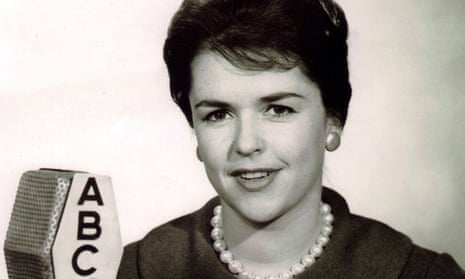Anne Morrissy Merick, the Vietnam war reporter, who has died aged 83, was one of a small band of pioneering female journalists who helped overcome the sexism that had so often prevented women getting to the frontline in previous wars.
During the Vietnam conflict, for the first time there were no official military barriers to female reporters getting as close to the fighting as they wished. The nature of the guerrilla warfare meant there were no frontlines as such – the war was everywhere. But the women still faced challenges from some of the military leaders on the ground, such as General William Westmoreland, well known for his views on the inadequacies of the female sex.
Westmoreland, who took over command of US forces in Vietnam in 1964, ordered that female reporters could not spend the night in the field with the troops. This made it impossible for them to go on most combat missions as there would be no way to return to base at night.
Morrissy and Ann Bryan Mariano, editor of Overseas Weekly, a tabloid based in Germany, organised a handful of female reporters covering the war to challenge Westmoreland’s order. They appealed to the US defense department, which overrode the general. “An edict like Westmoreland’s would prohibit women from covering the war. It was a knockout blow to our careers. We had to fight,” wrote Morrissy Merick in War Torn: Stories of War from the Women Reporters Who Covered Vietnam (2002), a book she co-authored with eight colleagues.
Morrissy Merick had argued that she needed access to the battlefield in order to produce the kind of in-depth reporting she considered was lacking in most daily television coverage where the war “was just chopped into little pieces of bang-bang every night for dinner entertainment”. Her objective was to get behind the story to show not only what the soldiers had to do but how they felt about it.
She was born in Manhattan, New York, daughter of Katherine (nee MacKay), a former actor, and John Morrissy, an advertising executive. Anne first came to national attention in the US while at Cornell University when, in 1954, she became the first woman to be named sports editor of the student newspaper the Cornell Daily Sun, defeating three male students in an election for the post. While there she achieved another first when she was admitted to the “previously sacrosanct” press box at Yale during a football game.
She also managed to conduct interviews in men’s locker rooms, earning the comment from the syndicated columnist Red Smith in the New York Herald Tribune: “Miss Morrisy [sic] is a slick little chick whose name probably will be linked in history with those of other crusading cupcakes such as Lady Godiva, Susan B Anthony, Lydia Pinkham and Mrs Amelia Bloomer.” He continued: “The first sportswriting doll to thrust her shapely foot through the door of an Ivy League press coop, she has breached the last bastion of masculinity left standing this side of the shower room.”
After graduation, she became sports editor of the international edition of the New York Herald Tribune. In 1961 Morrissy became an associate producer with ABC News, where she covered the civil rights movement and the space programme. She was sent by ABC to Saigon in 1967, initially on a three-month tour, as a television field producer.
As she herself recognised, there were not many women in television in those days. “Each network had its token [female] correspondents … the women’s movement had started to influence television executives and the fear of first class action lawsuits … forced them to add women to the payroll.” In total, 467 women became accredited during the Vietnam war, sometimes described as a “freelancer’s paradise” since anyone with a plane fare and two letters from provincial newspapers or agencies guaranteeing to take their articles could gain accreditation as an observer.
While there, Morrissy met the US News and World Report reporter Wendell “Bud” Merick, whom she married in 1969 and with whom she had a daughter. The couple stayed in Vietnam until 1973, when the magazine closed its bureau, raising their daughter in a war zone. “We all came away with a great feeling of love for Vietnam and for the people of Vietnam,” she said.
Bud Merick died in 1988. Morrissy later married Don Janicek, a doctor. He died in 2016. She is survived by her daughter, Katherine Anne, and four granddaughters.

Comments (…)
Sign in or create your Guardian account to join the discussion